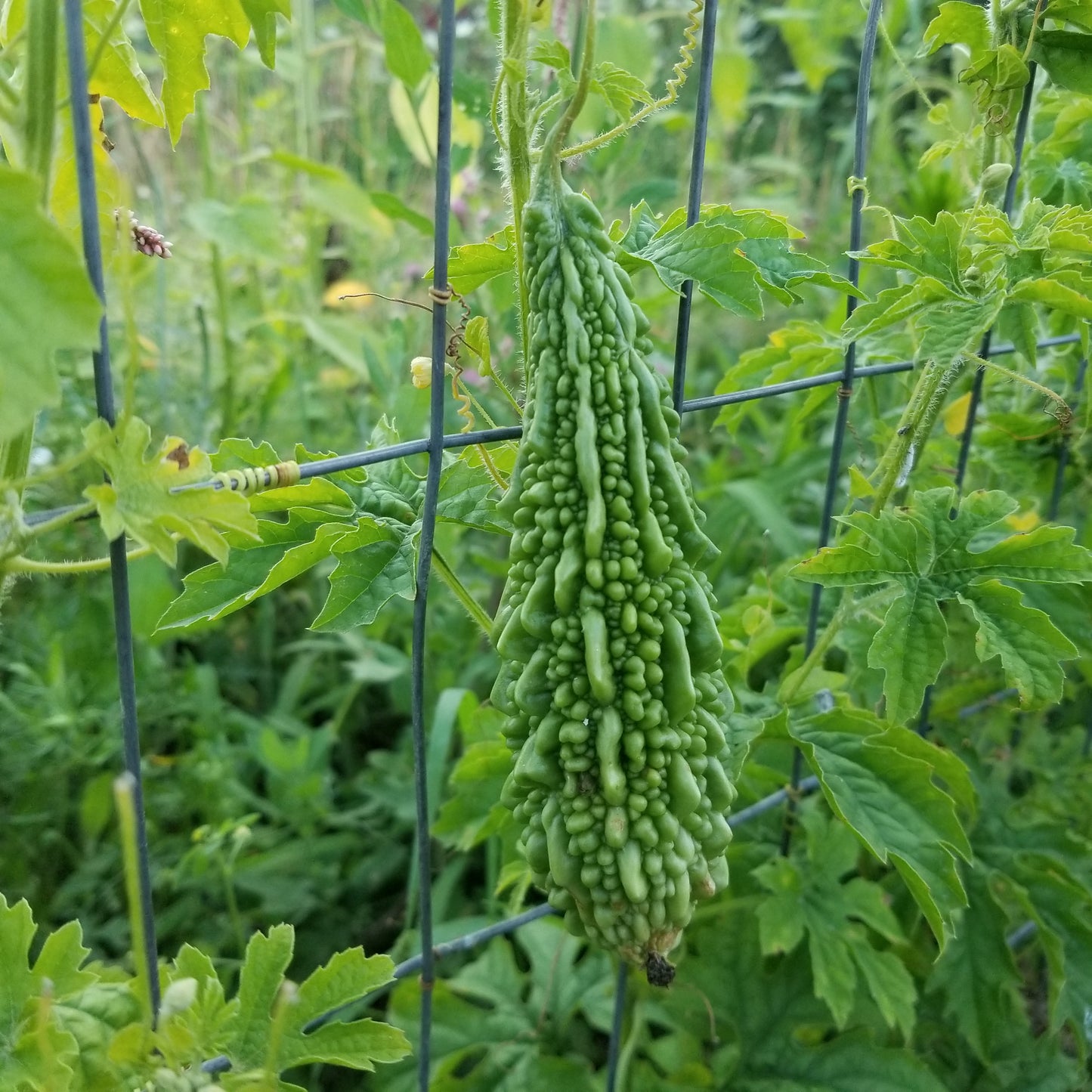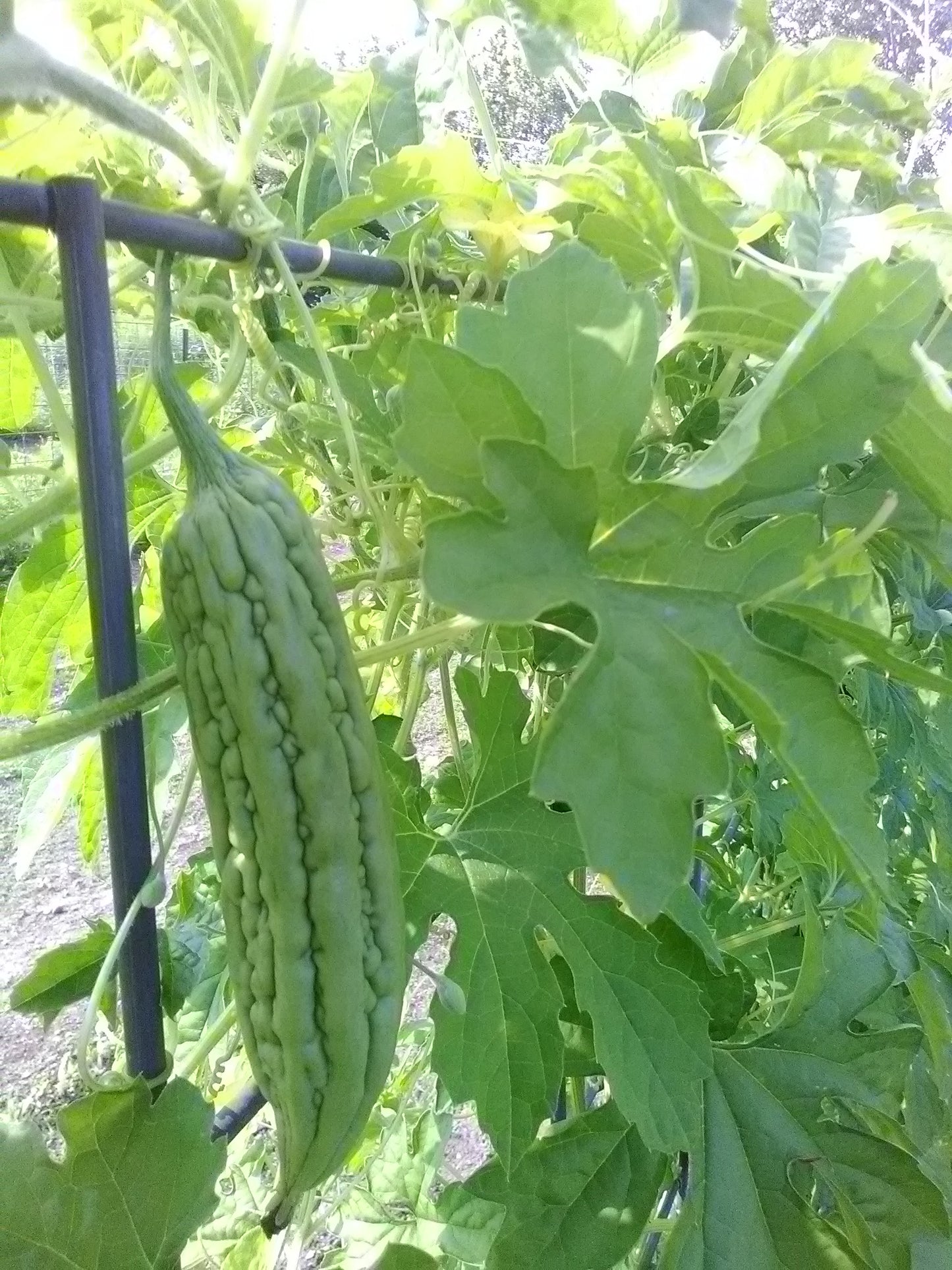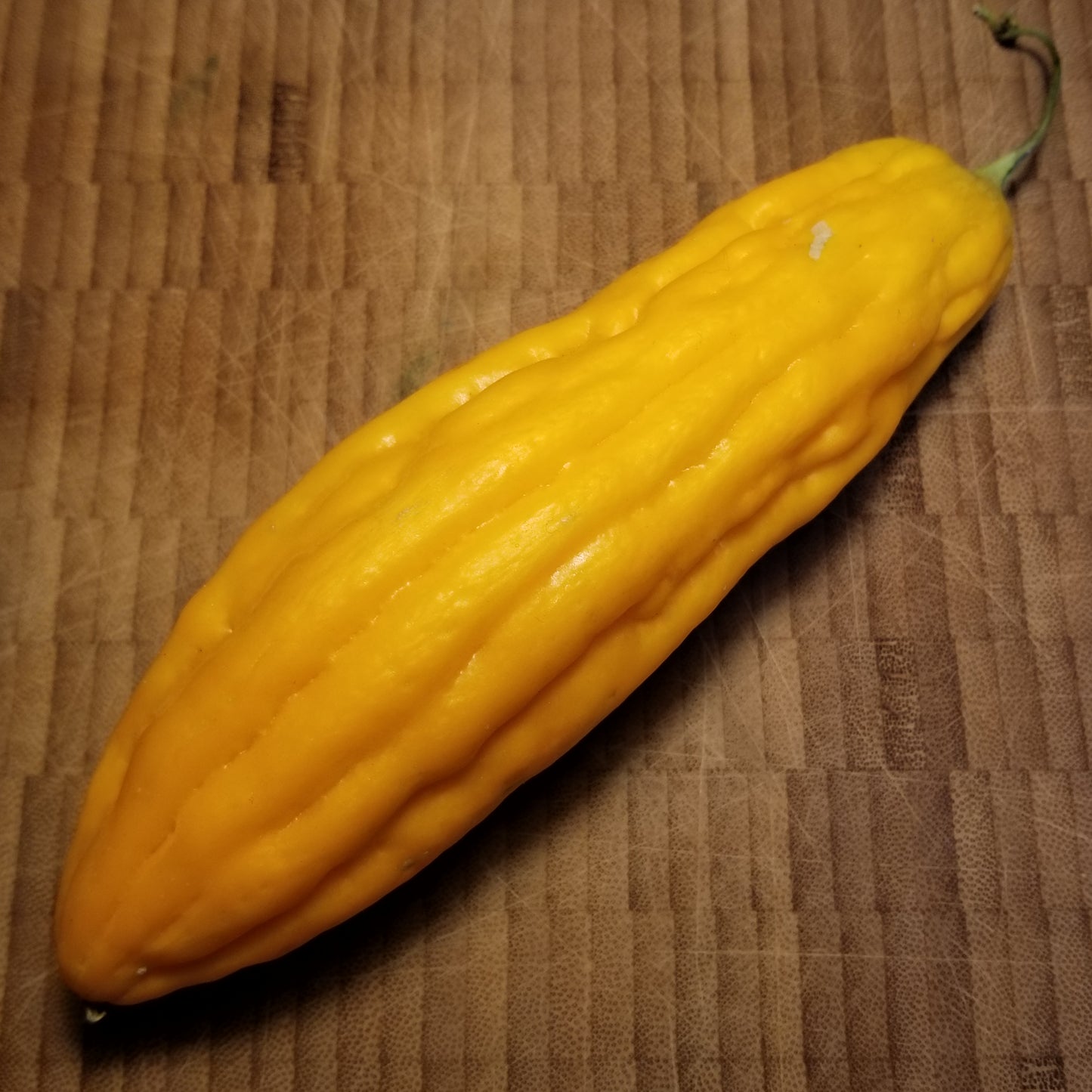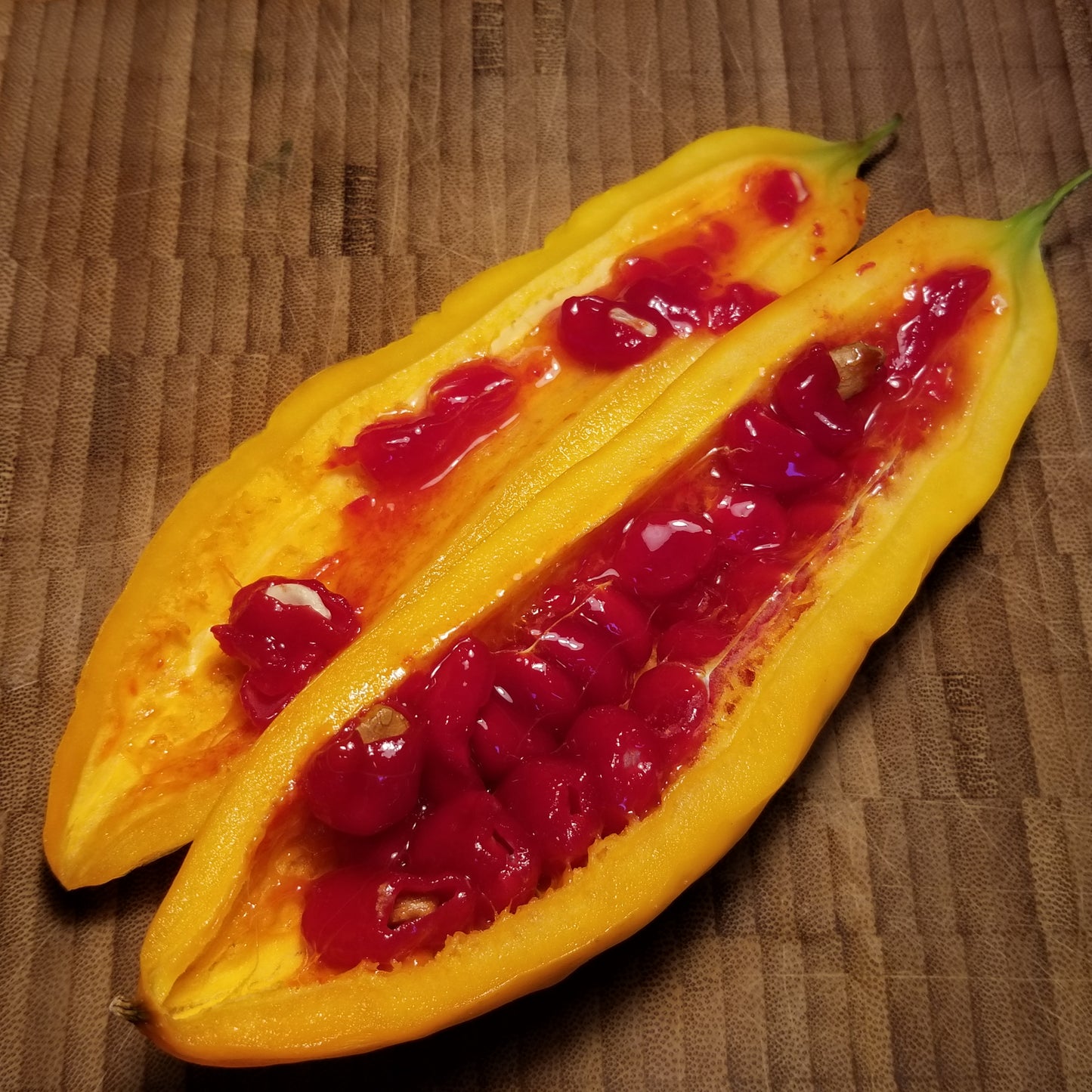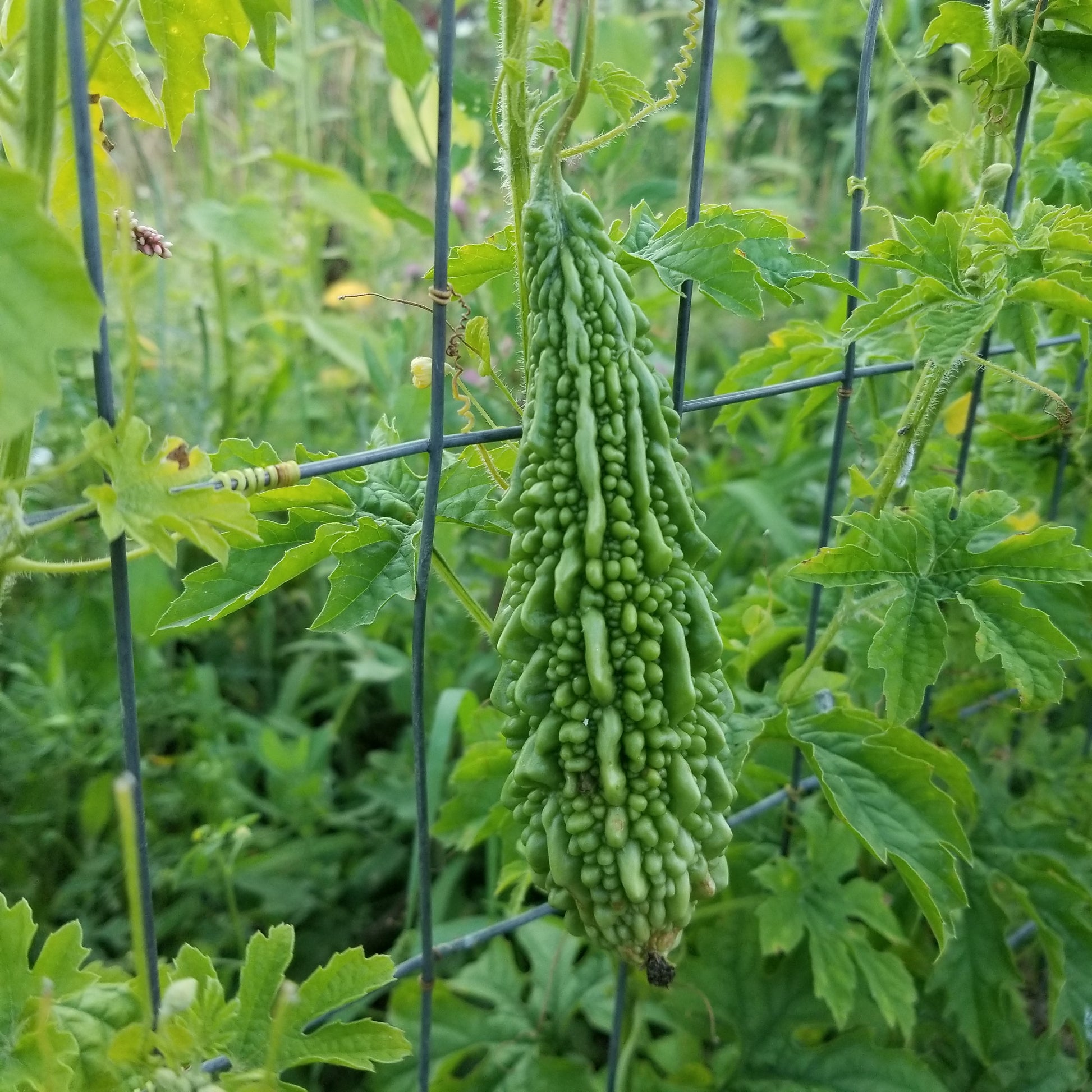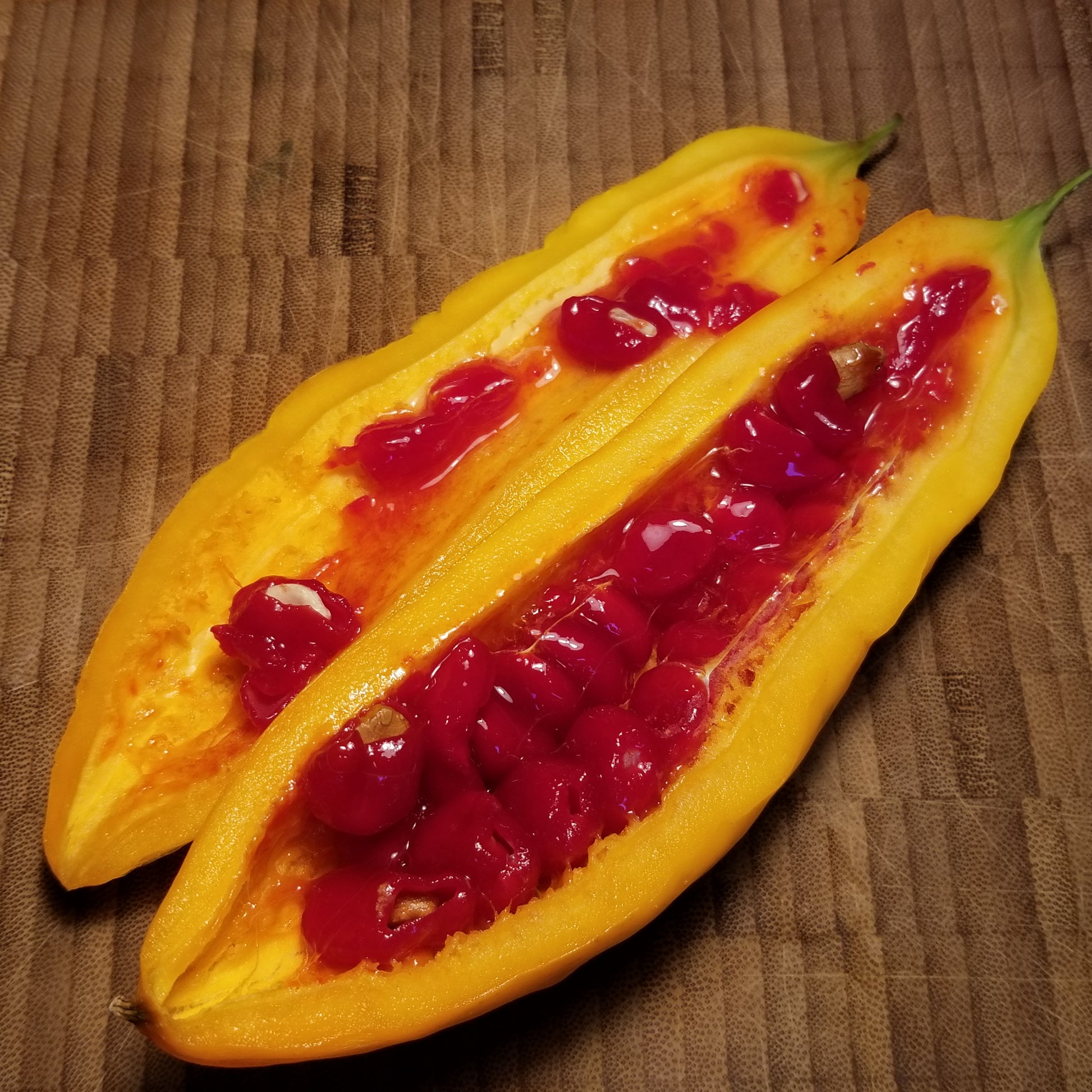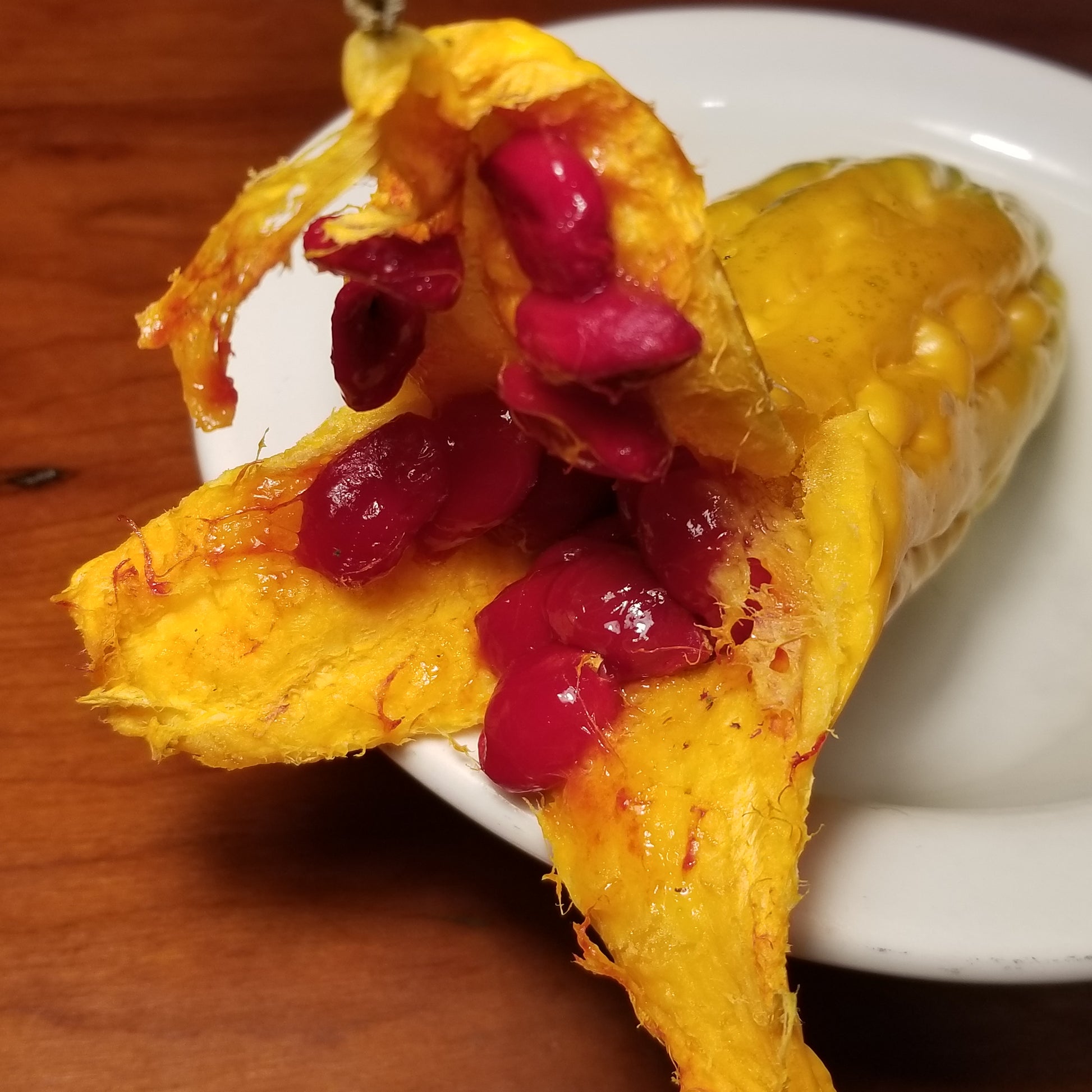Great Lakes Staple Seeds
Ampalaya (Bitter Melon)
Ampalaya (Bitter Melon)
Couldn't load pickup availability
(Momordica charantia); aka Bitter Melon, Cerasee; Minimum 20 seeds
Belonging to a distinctly different botanical group than the commonly grown members of the squash family, Ampalaya increases your garden's resilience to the challenges Mother Nature might send your way. Typically grown for the immature fruits, the young leaves and leafy vine tips are edible and nutritious, often used in teas.
As the name implies, fruits are bitter but parboiling the fruits for 3-4 minutes before adding to a recipe reduces the bitterness. Another way to reduce bitterness is to slice the fruits thinly and soak them in salted water for an hour - drain, rinse and stir fry!
Fruits mature from green through yellow to a brilliant orange. A neat feature of Ampalaya is the vibrantly red sweet gel that encapsulates each seed. DO NOT EAT THE SEEDS - they are considered poisonous. What is Mother Nature's purpose for the gel? It is believed that the gel attracts native wildlife to eat the seeds as a means of natural dispersal throughout its tropical home.
Despite its tropical lineage, Ampalaya vines produce well for us in southeast Michigan.
An informative discussion of the health benefits of Ampalaya is found on Nutrition and You


